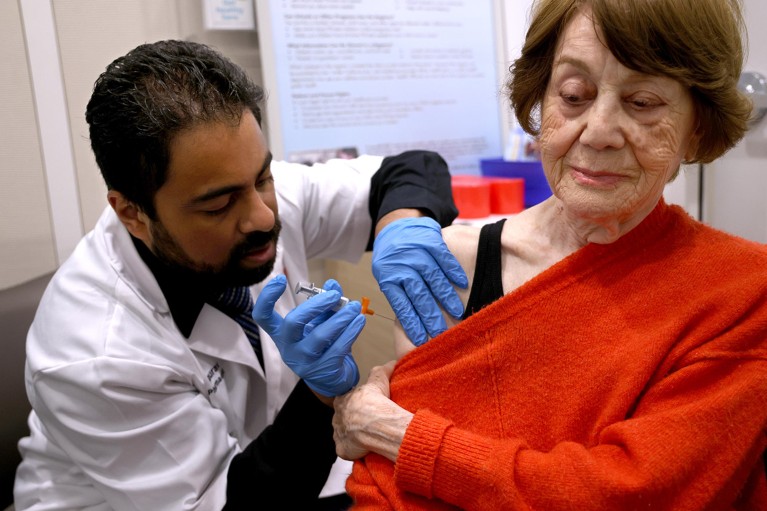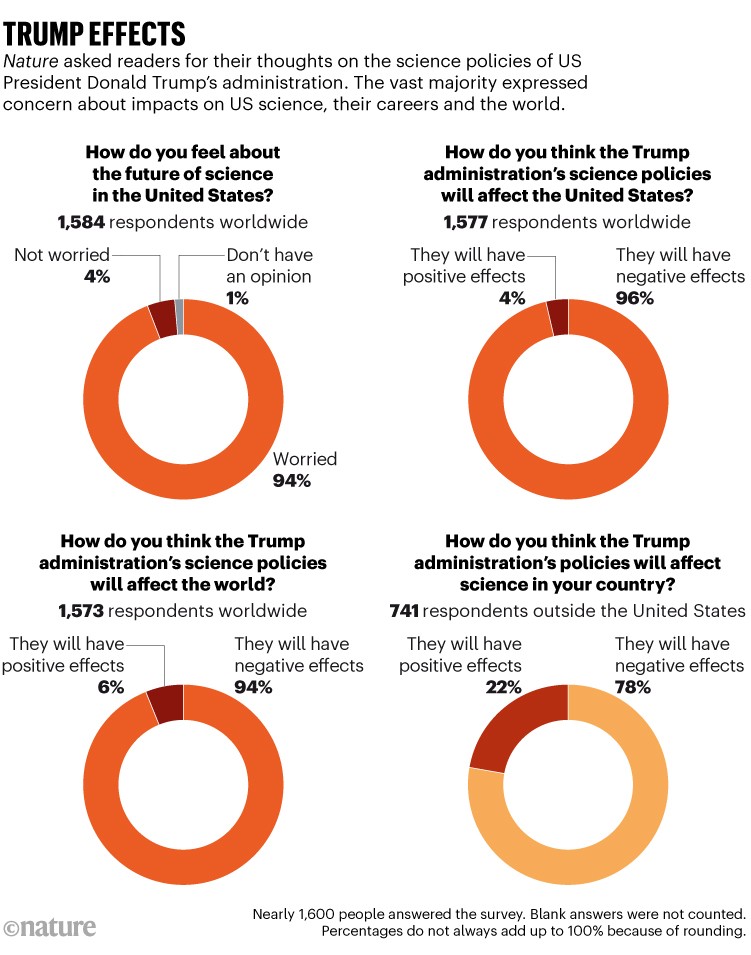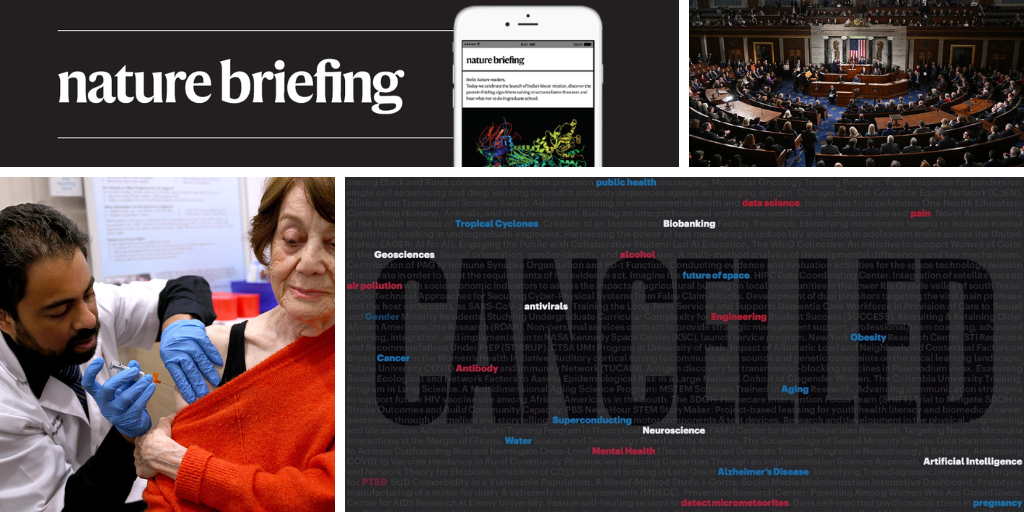You have full access to this article via your institution.
Hello Nature readers, would you like to get this Briefing in your inbox free every day? Sign up here.

Receiving a second dose of COVID-19 vaccine in the same arm as the first elicits a speedy immune response.Credit: Genaro Molina/Los Angeles Times via Getty
Receiving a COVID-19 booster vaccine in the same arm as the first vaccine dose leads to a faster, more effective immune response than having it in the opposite arm. A small study in 30 people showed that receiving a booster dose of the Pfizer COVID-19 vaccine in the same arm resulted in an immune response that peaked in around six days. By comparison, getting a booster in the arm opposite the one that received the initial dose led to an immune response that peaked four weeks later.
US congressional committees and think tanks that are led by Democrats are more likely to cite research papers than those led by Republicans. An analysis of 420,000 scientific references from policy documents produced by US congressional committees and reports from ideologically driven US think tanks between 1995 and 2022 found that Democrat-controlled committees were nearly 1.8 times more likely to cite science than were reports from Republican-led ones, and were more likely to cite high-impact research. The difference was more pronounced among think tanks: left-leaning groups were five times more likely to cite science than right-leaning ones.
Funnel-weaving spiders (Agelenopsis pennsylvanica) build their webs differently depending on how much noise they’ve previously been exposed to. These arachnids use vibrations to sense their environments. Researchers collected 60 funnel-weavers from urban and rural environments and exposed them to loud vibrational noise. They found that urban spiders built webs that dampened the vibrations of their environment, which could allow them to sense nearby prey more accurately. Rural spiders — unused to loud noise — built webs that transmitted certain vibrations from their surroundings to them, which might help them to sense specific environmental cues.
Reference: Current Biology paper
Features & opinion
In just the first three months of his second term, US President Donald Trump has destabilized eight decades of government support for science. His administration has fired thousands of government scientists, terminated swathes of research grants across disciplines and threatened to slash billions in funding from US research universities. This looks likely to be just the beginning: the administration’s proposal for the 2026 budget is all but certain to call for unprecedented cuts in investments in federal science and innovation, which leaves many wondering how US science will survive.
Experts say that other funding sources — such as companies, charities and individual states — can’t fill the gap left by the cuts, especially in fundamental research.. Eventually, as research wanes and the science-talent pipeline dries up, the United States will lose its spot as the world’s science superpower, experts warn. When the infrastructure surrounding research is dismantled “you’ve lost the momentum”, says science-policy specialist John Holdren. “You’ve lost the knowledge, and rebuilding it can take years to decades.”

Source: Nature analysis of survey data, April 2025
Laura Spinney’s Proto and J. P. Mallory’s The Indo-Europeans Rediscovered both investigate the origins of the most widely spoken language family in the world — Indo-European. By contrast, Rare Tongues by Lorna Gibb explores the opposite: why some languages become extinct and how that can expunge knowledge. “Together, these books capture the amazing complexity of languages worldwide,” says science writer Andrew Robinson in his review of all three. But his review comes with a warning: don’t expect a settled answer to the long-debated origin of Indo-European languages.
Clear and accessible images can be a crucial part of reporting the findings of an experiment. But often, images are poorly presented in papers: image panels lack labels or scale bars, and annotation features such as arrows are missing from the imaged objects. In some cases, photo editing is required to present images clearly. But there’s a fine line between clarifying and manipulating. Understanding the basics of how imaging techniques work can help scientists to avoid problems further down the line, says image-integrity analyst Jana Christopher. Above all, ensuring your data is in the best shape possible will make nailing the figures much faster, says visualization specialist Helena Jambor.
Today I’m popping the champagne. Not because I have anything to celebrate, but because it might help me reduce my risk of having a heart attack. Using data from more than 500,000 people, researchers found that alongside the usual factors such as weight and blood-pressure management, the consumption of white wine and champagne could have a protective effect against sudden cardiac arrest.
The wine won’t do my weight management and blood pressure many favours, but any excuse to have a glass now and then is enough for me.
While I pour myself a tipple, why not send your feedback on this newsletter to [email protected].
Thanks for reading,
Jacob Smith, associate editor, Nature Briefing
Want more? Sign up to our other free Nature Briefing newsletters:
• Nature Briefing: Careers — insights, advice and award-winning journalism to help you optimize your working life
• Nature Briefing: Microbiology — the most abundant living entities on our planet — microorganisms — and the role they play in health, the environment and food systems
• Nature Briefing: Anthropocene — climate change, biodiversity, sustainability and geoengineering
• Nature Briefing: AI & Robotics — 100% written by humans, of course
• Nature Briefing: Cancer — a weekly newsletter written with cancer researchers in mind
• Nature Briefing: Translational Research — covers biotechnology, drug discovery and pharma


